Top Tips to Identify and Repair Hail Damage Roof
Suspect hail damage roof to your roof? This guide will help you identify the signs, assess the damage, and take the right steps for repair and prevention. Learn what to look for and how to protect your home.
Key Takeaways
-
Identify hail damage early by inspecting for dents, cracks, and granule loss on shingles to prevent further issues.
-
Conduct a comprehensive damage assessment post-storm, documenting signs and timing to facilitate insurance claims.
-
Implement preventative measures like installing impact-resistant shingles and scheduling regular roof maintenance to mitigate future hail damage.
Recognizing Hail Damage on Your Roof
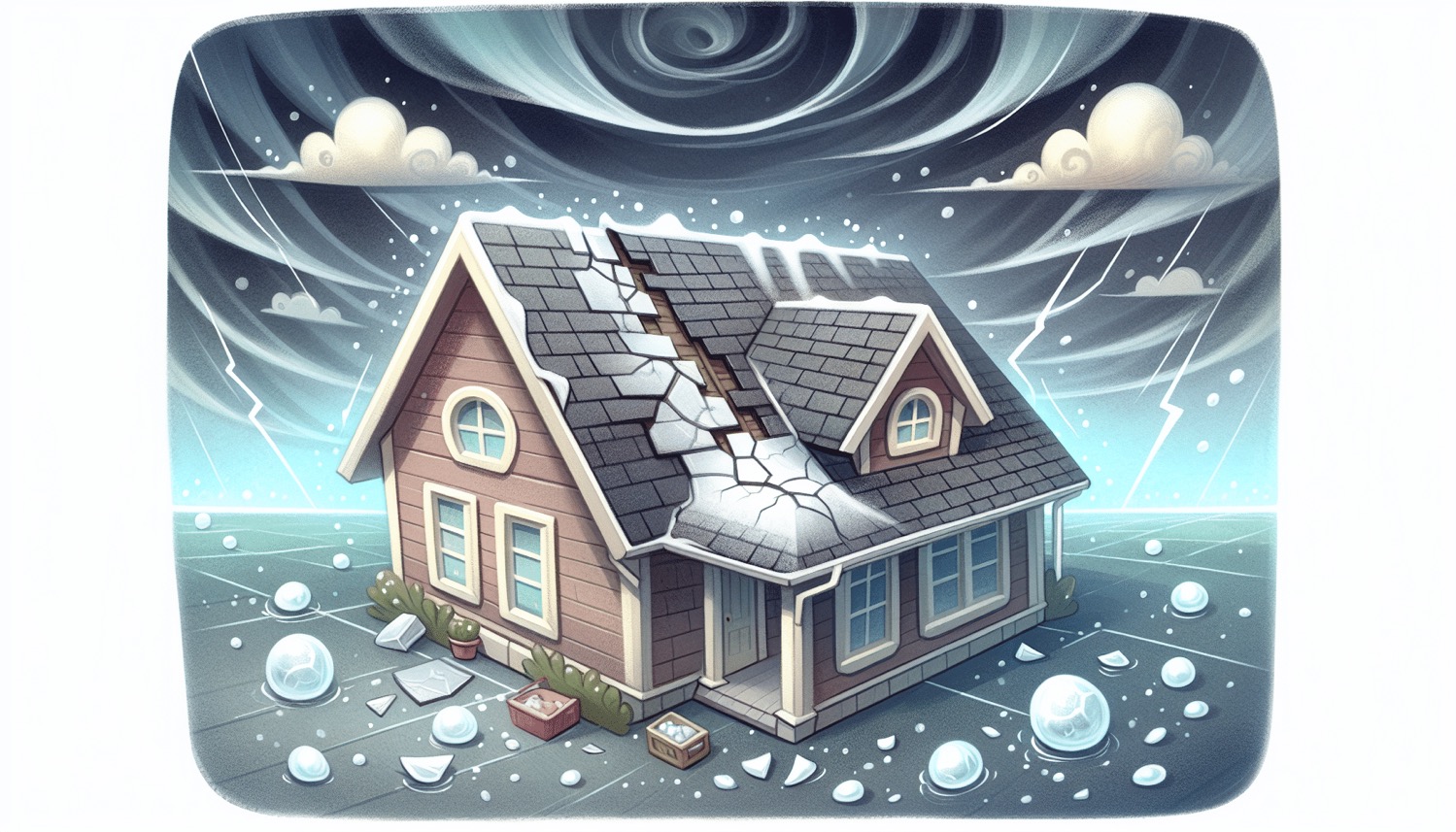
Identifying hail damage on your roof helps prevent further deterioration and expensive repairs. When hail falls during a storm, it can cause various forms of damage to your roof’s structure and materials. The severity of the damage often depends on the size of the hailstones and the wind conditions during the storm.
Homeowners should conduct a thorough inspection of their roof immediately after a storm. Small dark spots, discoloration, and visible dents on shingles are common signs of hail damage. Ignoring these signs can lead to severe consequences like roof hail damage, water damage, and mold growth inside your home.
Understanding and identifying the various forms of hail damage is key.
Shingle Dents and Cracks
Dents and cracks in shingles are some of the most obvious signs of hail damage. When hailstones hit shingles at high speeds, they can create impact marks and cracks that compromise the integrity of the shingles. Even smaller hail can cause such damage, which might not be immediately noticeable but still warrants a thorough inspection.
Cracked shingles can lead to leaks and other structural issues if not addressed promptly. Have any damaged shingles replaced or repaired by a professional to maintain the roof’s protection.
Regular inspections help detect hail damage early, allowing for timely repairs before more severe issues arise.
Granule Loss
Granule loss is another significant indicator of hail damage. Hail storms can knock off the protective granules from asphalt shingles, leaving patches of missing granules. These granules play a crucial role in protecting the shingles from UV light degradation and further damage.
When granules are lost, the underlying asphalt becomes exposed to the elements, which can lead to faster deterioration of the shingles. This granule loss significantly reduces the roof’s lifespan and increases the likelihood of leaks.
Inspect your roof for granule loss after hail and address any issues promptly to ensure durability.
Damaged Roof Vents and Flashing
Roof vents and flashing are also susceptible to hail damage. Look for bent, dented, or otherwise damaged areas on these components as signs of hail impact. Damaged vents can affect the ventilation of your attic, leading to increased humidity and potential mold growth.
Flashing, which seals the joints and edges of your roof, can also be compromised by hail impacts. Dents and dings in the flashing can create gaps that allow water to seep into your home, causing leaks and water damage.
Check that vents and flashing are intact after a storm to prevent more serious future issues.
Assessing the Extent of Hail Damage
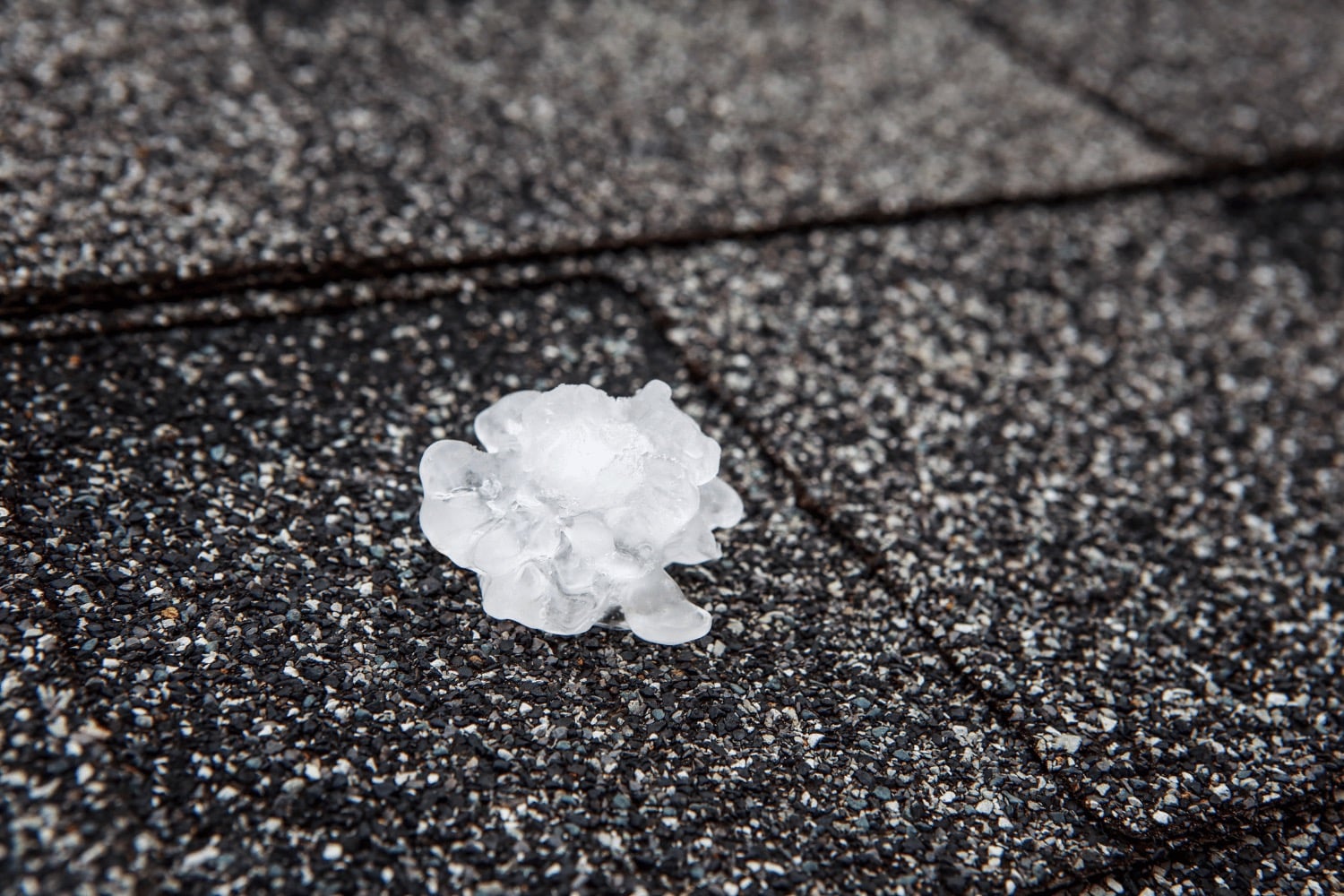
After identifying the signs of hail damage, the next step is assessing the extent of the damage. Hail damage can manifest in various forms, including dents, leaks, and broken shingles, all of which can compromise your roof’s integrity. A comprehensive inspection uncovers all damaged areas, including those not immediately visible.
Documenting the timing of the storm and visible damage aids in a smoother insurance claim process. Thorough damage assessment helps determine if minor repairs or a full roof replacement is needed.
Surface vs. Hidden Damage
Hail damage is categorized into functional and cosmetic types. Functional damage affects the roof’s integrity and longevity, potentially leading to structural issues. This type of damage can include splits in shingles and other issues that aren’t immediately visible but can cause significant problems over time.
Hidden damage, such as sagging in the roof, may indicate damaged trusses or rafters. Addressing both surface and hidden damage ensures the roof’s stability and prevents future problems.
Impact on Roofing Materials
Different roofing materials exhibit varying responses to hail damage. For instance, wood shingles may split down the middle when impacted by hail, while asphalt shingles may show dings and dents. Knowing the specific impact on your roofing material helps decide the best course of action for repairs.
A professional roofing contractor can provide valuable insights into how different materials respond to hail impacts and recommend the most effective repair strategies. This knowledge is crucial for maintaining the roof’s integrity and preventing further damage.
Checking Gutters and Downspouts
Gutters and downspouts are often overlooked but can show significant signs of hail damage. Dents in these components can suggest potential damage to the roof above. Regular cleaning and inspection of gutters and downspouts help avoid backup and subsequent roof damage.
By checking these areas, you can get a better overall picture of the hail damage and take necessary steps to fix any issues before they escalate.
Steps to Take After a Hail Storm

Promptly addressing hail damage prevents further issues. After a hail storm, take immediate steps to mitigate damage and begin repairs. This involves conducting a preliminary inspection, contacting a professional roofing contractor, and filing an insurance claim.
Conduct a Preliminary Inspection
Before inspecting your roof, ensure you practice safety to avoid accidents. Wear soft-soled shoes or roofing boots to maintain traction while on the roof. Follow appropriate safety guidelines to prevent falls and other injuries.
During your inspection, use chalk to mark hail hits and take pictures to document the damage. This documentation will be invaluable when filing an insurance claim and scheduling a professional roof inspection.
Contacting a Professional Roofing Contractor
Call a professional contractor for a free inspection if you suspect hail damage. An experienced roofing contractor can help secure a fair settlement for hail damage.
A professional roof inspection will cover all aspects of storm damage assessment and provide accurate repair estimates. Rapid Roofing provides comprehensive services, including repairs, replacements, and new installations, to restore your roof’s integrity.
Filing an Insurance Claim
Most homeowners insurance policies typically cover hail damage, although coverage can vary. Document hail damage using a camera for insurance purposes. If damage is extensive, file an insurance claim within one year.
An experienced contractor can assist in navigating the insurance claims process. Consider the potential impact on your insurance premiums before filing multiple claims.
Repairing Hail Damage
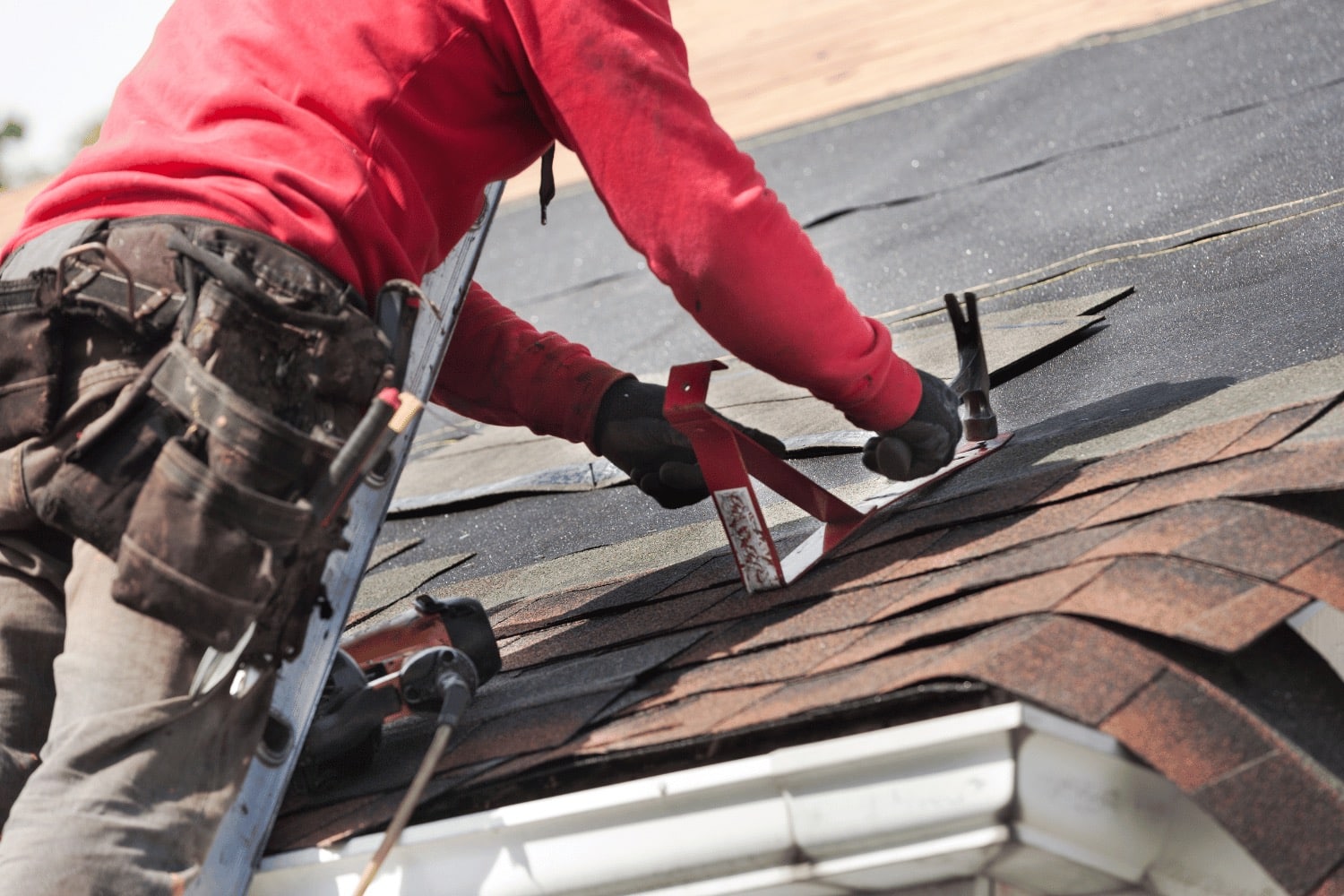
Repairing hail damage can vary from minor fixes to full roof replacements, depending on the extent of the damage. High-quality materials and professional workmanship ensure effective repairs.
Minor Repairs
Minor repairs often involve replacing shingles and sealing small cracks. These repairs maintain the roof’s integrity and prevent water intrusion. Regular checks can catch issues early before they escalate.
Major Repairs and Roof Replacement
In cases of severe damage, a full roof replacement may be necessary. Common issues discovered during a roof inspection include improper installation and missing or damaged flashing. A roofing contractor can provide an estimate and recommend next steps for repairs or replacement.
When planning a roofing project, consider the type of roofing material, contractor reputation, financing options, warranties, and timeline for completion. Rapid Roofing offers competitive financing options and uses high-quality materials to ensure longevity and performance in roof replacements.
Preventative Measures Against Future Hail Damage
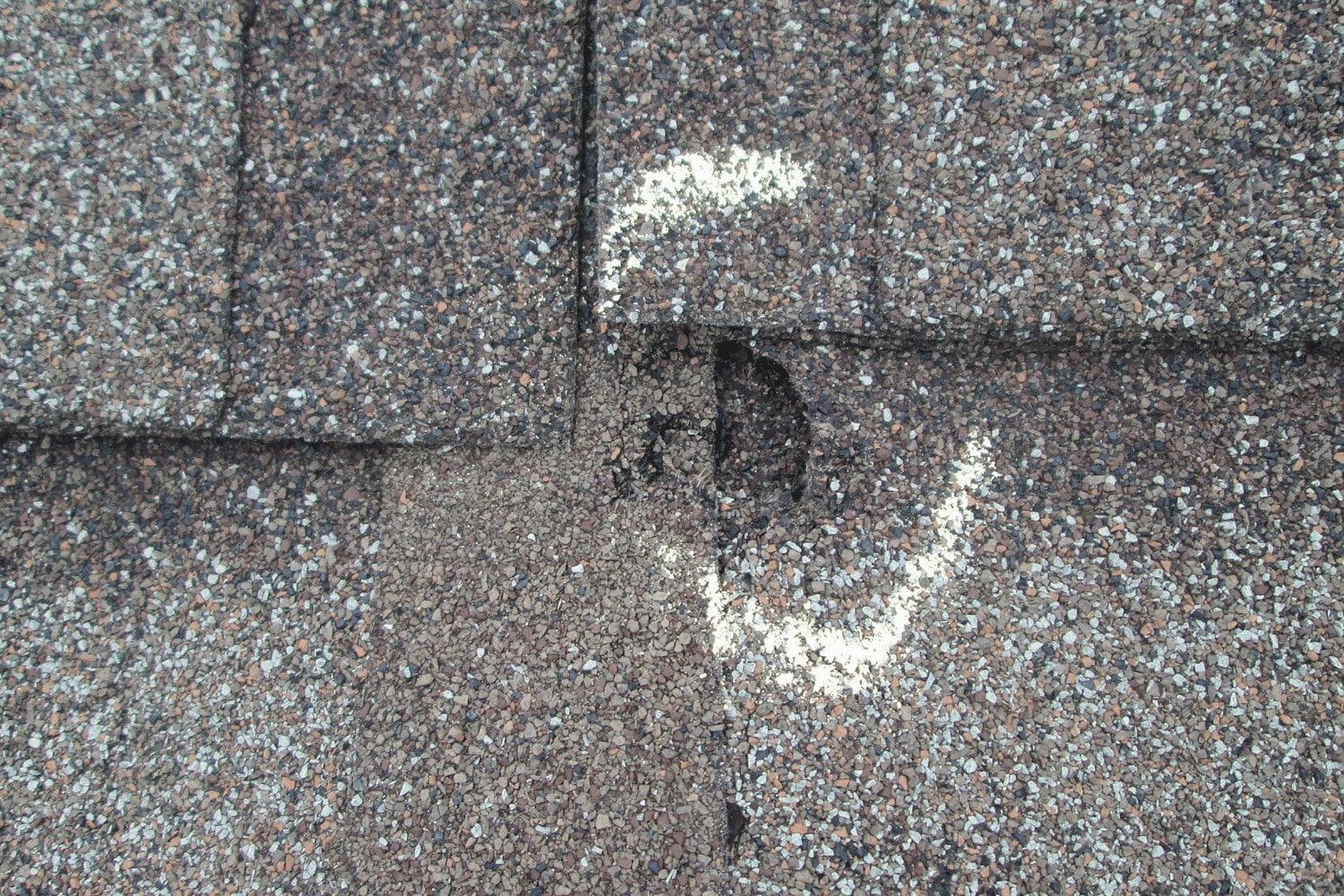
Taking preventative measures can help protect your roof from future hail damage. The severity of hail damage can be influenced by factors such as wind conditions, the size of hailstones, and the building materials used.
Installing Impact-Resistant Shingles
Class 4 impact-resistant roofing shingles are specifically designed to withstand severe hail impacts. These roof shingles can endure impacts from hailstones up to 2 inches in diameter, reducing the likelihood of roof leaks.
Impact-resistant shingles can also lead to insurance premium discounts for homeowners.
Regular Roof Maintenance
Regular inspections and maintenance can identify vulnerabilities before hail damage occurs. This helps detect early signs of damage, preventing costly repairs later.
Ensuring your roof remains in optimal condition is crucial for its longevity and performance.
Summary
Summarize the importance of recognizing and repairing hail damage promptly. Highlight the key points discussed in the blog post and inspire the reader to take action to protect their roof. End with a call to action, encouraging readers to schedule a roof inspection and consider preventative measures.
Frequently Asked Questions
What additional services does Rapid Roofing provide besides roofing?
Rapid Roofing provides additional services including gutters, siding, skylights, and other exterior home improvements. This comprehensive approach ensures that all aspects of your roofing and exterior needs are covered.
How can I determine if Rapid Roofing services my area?
To determine if Rapid Roofing services your area, visit their website and review the service areas listed for Michigan and Ohio. If your location is not mentioned, consider contacting them directly for clarification.
Does Rapid Roofing offer financing assistance?
Yes, Rapid Roofing offers financing assistance through flexible programs, including options with Michigan Saves.
Can Rapid Roofing help with insurance claims?
Yes, Rapid Roofing can assist you with insurance claims by providing a free roof inspection to evaluate any damage. Their experience in this area can help streamline the process for you.
What should be considered when planning a roofing project?
When planning a roofing project, it’s crucial to evaluate the roofing material, contractor reputation, financing options, warranties, and project timeline to ensure a successful outcome. These factors collectively influence the quality and efficiency of the project.


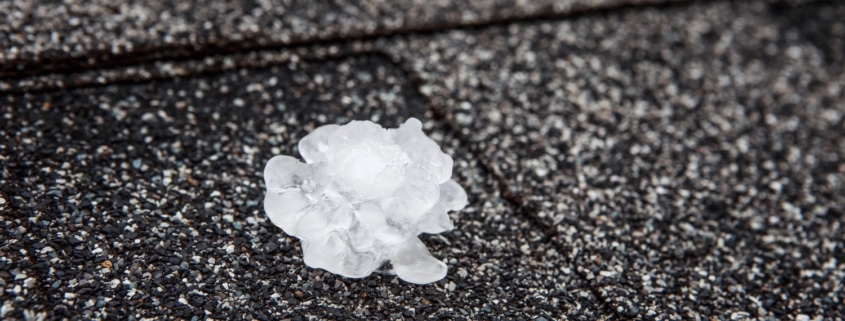

 Residential Roofing
Residential Roofing Storm Damage
Storm Damage Multi-Family Homes
Multi-Family Homes
